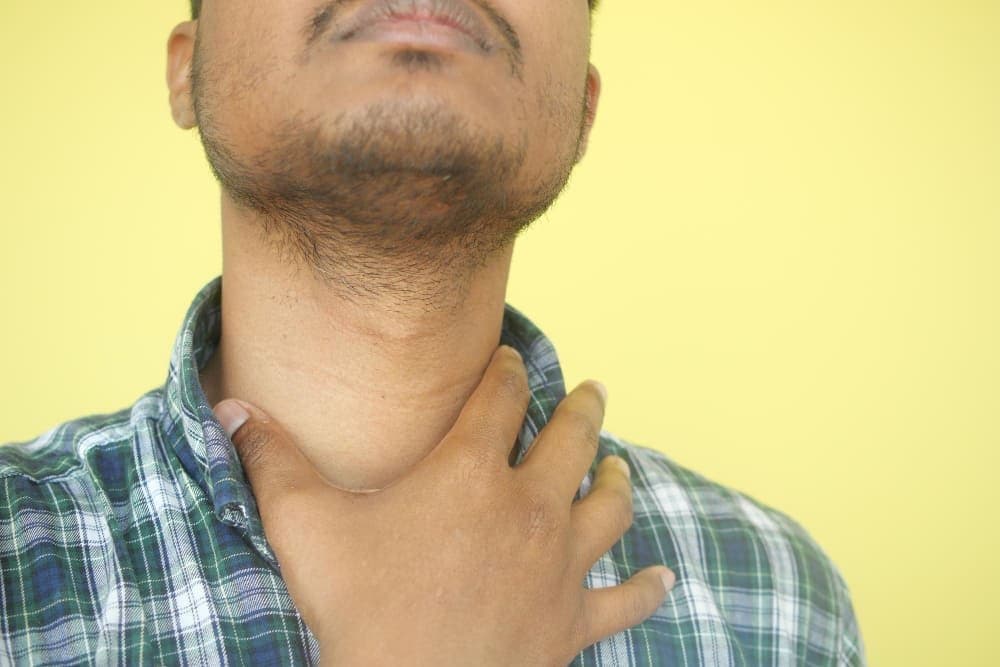Living with an enlarged thyroid can be challenging. Now, imagine a solution without surgery or scars. Let’s delve into the world of thyroid artery embolization, interventional radiology, and how it’s changing lives. This advanced treatment offers a safe path to relief. ✨

What is Interventional Radiology’s Role in Thyroid Care?
Before we dive into the specifics of the procedure, it’s important to understand the medical specialty behind it. Interventional radiology is a cutting-edge field where doctors use medical imaging to perform minimally invasive procedures. These specialists, called interventional radiologists, are experts in navigating the body’s intricate network of vessels to deliver treatment directly to the source of a problem.
Instead of making large incisions, they use tiny tools, like a catheter and wires, to treat a wide range of conditions. When it comes to the thyroid gland, this expertise is revolutionizing how we approach issues like an enlarged goiter.
Unpacking Thyroid Artery Embolization (TAE)
Thyroid artery embolization (often shortened to TAE) is a premier example of interventional radiology in action. The term refers to a non-surgical procedure designed to reduce the size of the thyroid gland. So, how does it work?
The core principle is simple: an enlarged thyroid needs a rich blood supply to maintain its size and function. The embolization of thyroid arteries works by blocking the blood flow to the gland. A skilled interventional radiologist performs a selective catheterization of the thyroid’s main feeding arteries.
During this process, tiny particles are introduced into these arterial pathways. These particles act as a dam, cutting off the blood supply. Without this vital flow, the overactive or enlarged tissue begins to shrink.
The TAE Procedure: A Step-by-Step Guide

The thought of any medical procedure can be intimidating, but knowing what to expect can bring a sense of calm. The thyroid arterial embolization procedure is known for being patient-friendly. Here’s what a typical treatment looks like, performed inside an interventional radiology department:
- Preparation and Access: The process begins with a small numbing injection. Then, the radiologist makes a tiny puncture, known as percutaneous access, in either the groin or arm to enter an artery.
- Catheter Navigation: A very thin, flexible tube called a catheter is gently inserted. Using sophisticated, real-time X-ray imaging to guide their every move, the doctor navigates this catheter through the body’s vessels up to the neck.
- Targeting the Arteries: The radiologist carefully maps out and moves the catheter into the specific thyroid arteries that are feeding the goiter.
- Embolization: Once the catheter is perfectly positioned, the tiny particles are released. This part of the procedure is precise and controlled, ensuring that only the targeted tissue is affected. The healthy parts of the gland are left alone. ✅
Who Is the Right Candidate for This Procedure?
While TAE is a powerful tool, it’s most suitable for specific patients. The main indication for thyroid artery embolization for goiter reduction is a benign (non-cancerous) goiter that is causing symptoms. These can include:
- A visible lump or swelling in the neck.
- Difficulty swallowing or breathing.
- A feeling of tightness or pressure.
It’s also an excellent option for patients with hyperthyroidism due to conditions like toxic diffuse goiter. Above all, TAE is a fantastic alternative for individuals who are not ideal candidates for surgery or who wish to avoid it.
Benefits, Success Rate, and Important Considerations
When weighing your options, the benefits and risks are top of mind. TAE shines in several key areas.
- High Success Rate: The thyroid artery embolization success rate is impressively high, with most patients experiencing significant reduction in goiter size and a major improvement in their symptoms.
- Minimally Invasive: No neck scar, less pain, and a much faster recovery compared to traditional surgery.
- Safety Profile: While every procedure has risks, major thyroid embolization complications are rare. Minor side effects might include temporary neck pain or hormonal changes. The risk of a thyroid artery aneurysm is exceedingly low when the procedure is done by an expert.
- Cost-Effectiveness: The thyroid artery embolization cost is often comparable to or less than surgery, especially when considering the shorter hospital stay and quicker return to work.
Leading institutions like the UW Department of Radiology and UCLA Health continue to advance and validate this treatment, solidifying its place in modern medicine.
Your Partner in Thyroid Health 🩺
Choosing the right treatment is a decision made between you and your doctor. As a skilled interventional radiologist, Dr. Samir Abdel Ghaffar is an expert in these types of advanced, minimally invasive therapies. He understands the nuances of the thyroid gland and can determine if TAE is the best path forward for you, or if another therapy like radiofrequency ablation would be more suitable.
Thyroid artery embolization is more than just a medical term; it’s a modern solution that empowers patients. It offers a safe, effective, and less daunting path to finding relief from goiter symptoms and reclaiming your comfort and confidence.




